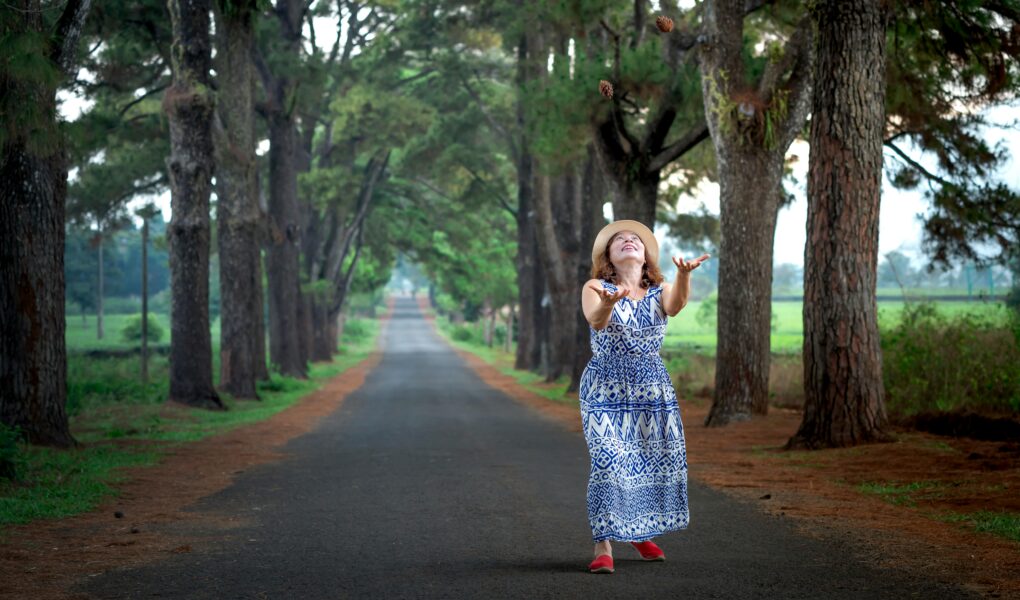Wind brushes your face, sunlight flickers through the leaves, and the steady rhythm of your footsteps fills the quiet. Nature wraps around you, offering space to think and breathe. On these trails, confidence often grows where you least expect it.
Nature walks can become a steady path toward stronger self-belief and personal growth. Whether it’s the calm of a green park or the wild air of a forest, spending regular time outdoors boosts mood, sharpens focus, and quiets self-doubt. In this post, you’ll discover how moving through natural spaces can help you heal, build inner strength, and return home empowered.
Why Nature Walks Build Self-Belief
Fresh air, textured trails, and the rise and fall of your breath—nature walks are more than just exercise. They’re a quiet interruption to the noise of city life, a pause that lets self-belief find solid ground. As sunlight slips through the leaves and the world grows still, our confidence grows stronger. Let’s look closer at how time in green spaces shapes self-esteem and supports real change within.
The Power of Green Spaces

Photo by Konstantin Mishchenko
Stepping away from crowded streets and into a leafy park brings an instant shift. Natural spaces invite us to slow down. Grassy paths, tall trees, and wide skies give our minds room to stretch. You may feel small but somehow stronger, rooted by quiet and beauty.
- Greenery calms the mind: Walking in parks or forests can lower blood pressure and heart rate, compared to sidestepping potholes and dodging honking cars.
- Natural beauty builds perspective: Witnessing the pattern of leaves or sunlight on water reminds us that we’re part of something bigger. This connection fosters a quieter mind, leading to deeper self-acceptance and confidence.
- Nature supports growth: In green spaces, we’re away from constant judgments or comparisons. Without distraction, personal strengths shine through.
A recent report by the American Psychological Association notes that exposure to nature improves focus, lowers stress, and boosts mood, all factors that help us see ourselves more kindly. Explore more on how outdoor settings shape mental well-being in the article Nurtured by nature.
How Movement in Nature Relieves Stress and Lifts Mood
Movement outdoors does something different than a treadmill ever could. Every gentle step, every shift in light, tunes your senses and quiets anxious thoughts. The simple rhythm of walking, paired with bird calls or the breeze, melts tension you didn’t know you held.
Why do our worries seem smaller beneath an open sky? Here’s what happens when you move outside:
- Gentle activity releases stress: Your body naturally relaxes as you walk among trees or by water. Levels of the stress hormone cortisol drop and, in turn, self-doubt feels lighter.
- Clearer thinking: Fresh air and varied scenery spark clearer ideas and problem-solving. Small wins—like reaching a trail marker or noticing a hidden flower—can rebuild lost confidence.
- Mood lifts naturally: The freedom of space and movement taps into calm. Research from Harvard confirms that as little as 20 minutes spent in nature can noticeably lower stress (A 20-minute nature break relieves stress).
Even a short stroll in a local park can shake off the day’s heaviness—helping you move forward with more self-trust.
Scientific Findings on Nature and Self-Esteem
Scientists have studied nature’s impact and the numbers tell a clear story: getting outside changes us.
A 2021 overview published in the National Institutes of Health library found that people who spent at least 120 minutes a week in natural environments reported higher levels of health and well-being (Associations between Nature Exposure and Health). That’s just over 15 minutes a day in a quiet park or tree-lined street.
Key findings from recent research include:
- Better mood and reduced anxiety: Studies have shown that exposure to green spaces leads to lower rates of depression and anxiety.
- Boosted self-esteem: Immersion in nature helps people feel more connected to themselves. A study in the UK found self-esteem increased after just a short walk outdoors.
- Contrast with urban settings: Concrete and crowds may raise stress—even as we adapt to city life. Natural spaces do the opposite, giving both body and mind space to recover and recharge (Ecopsychology: How Immersion in Nature Benefits Your Health).
Spending two hours a week in nature offers a practical, science-backed path to stronger self-belief, clearer thinking, and personal growth. Every step along a forest trail is a reminder: you can shape your own story, starting with a simple walk.
Turning Walks Into a Practice for Inner Strength
Picture stepping onto a wooded path, dappled light warming your face, your feet moving at a steady pace. This is more than a stroll—it’s a chance to build unshakable self-trust, one thoughtful step at a time. When you approach each walk with attention and purpose, those minutes outdoors become a real practice for inner strength. Here’s how to turn a walk into a tool for self-belief and growth.
Walking With Intention: Setting a Purpose for Each Step
 Photo by Daniel’s Richard
Photo by Daniel’s Richard
Heading outside with no plan can bring peace, but bringing intention to your walk can transform the entire experience. Before taking your first step, pause and think: What do I need from this moment? Maybe you crave courage to try something new. Maybe you want to shake off self-doubt. Naming your intention makes each walk a mini journey toward personal growth.
Try setting a purpose like:
- Releasing negative self-talk with each breath.
- Noticing something beautiful to remind yourself of possibility.
- Walking with your head held high to practice confident posture.
- Repeating a simple self-belief mantra as your feet touch the ground.
Over time, walking with clear purpose teaches your brain to connect movement with positive change. Connecting intention to action fosters a sense of control over your mindset and confidence. Want more tips on setting yourself up for personal growth in nature walks? Explore ideas from GoKC Nature’s guide on boosting self-esteem through nature therapy.
Mindful Walking: Engaging the Senses
The surest way to quiet doubt is to come back to the here and now. Mindful walking turns each step into an anchor. As you move, notice how the breeze brushes your cheek, how sunlight warms your arms, or how gravel crunches under your boots.
Make your next walk a full-body sensory experience by:
- Listening: Let yourself hear birds, wind, or your breath. Don’t rush—count the sounds.
- Seeing: Notice the color of leaves, light on water, or distant hills. Let your eyes soften. Take in what’s around you.
- Feeling: Focus on how your clothes feel, the rhythm of your step, the swing of your arms. Savor how strong your body feels.
- Smelling: Breathe in fresh grass, pine needles, wildflowers, or even damp earth.
Staying connected to your senses during a walk helps anchor attention—and calms the part of your mind that questions your worth. Mindful walking is both a grounding and empowering tool. For a step-by-step guide to making this technique natural, see 6 Ways to Enjoy Mindful Walking and the restorative practice shared at PositivePsychology.com.
Reflecting and Building on Each Experience
After your walk, pause before rushing back to daily life. This is your chance to lock in the growth you’ve begun. Reflection turns a simple walk into a foundation for stronger self-belief.
You can build a habit of noticing progress and celebrating small wins by:
- Journaling: Write about new thoughts, feelings, or sights that stood out. Even a line or two keeps your growth visible.
- Voice-recording: Speak a quick message to yourself. Share what made you proud or grounded, right into your phone.
- Mental recap: Mentally list one lesson or observation from your walk, and connect it to your bigger goals.
Tracking your experiences—no matter how small—creates a visible thread of personal progress. Over weeks, these moments add up to a deeper, steadier sense of inner strength. By connecting each walk to reflection, you create milestones along your path, turning every outing into a stepping stone for self-belief.
Removing Barriers and Making Nature Accessible
Nature feeds us with calm and confidence, but for many, getting outdoors can feel out of reach. Sometimes it’s a matter of time, distance, or living in the city. Other times, the challenge is mobility or finding the right community support. The good news: nature is closer and more welcoming than it seems. With fresh ideas and the right resources, anyone can find a green space and make walking in nature a regular part of life—no matter the obstacles.
Finding Nature in Everyday Spaces
Even in the heart of the city, nature isn’t far. Parks and public gardens often offer a surprising sense of escape. Tree-lined streets paint daily routes with color, and green rooftops bring sky-high grass and wildflowers right to urban blocks.
Look for options like these:
- City parks: Most neighborhoods have small parks or plazas. A daily loop around the nearest green spot counts.
- Public gardens: Many cities support botanical gardens or community plantings. These often feel like hidden worlds—quiet, lush, and brimming with life.
- Green rooftops and courtyards: Seek out buildings with planted rooftops or shared gardens. Lunch outdoors here resets your mind.
- Tree-lined trails: Some cities mark local “urban trails”—routes just for walkers and cyclists, shaded by mature trees.
- Nature centers: These sometimes offer short walks, wildlife viewing, or nature-inspired art.
A walk doesn’t need to be wild or remote. Even a single street lined with old sycamores or a lunch break in a city garden can help you reset and reconnect. All it takes is curiosity and a willingness to notice the green around you.
Group Walks and Community Resources
You don’t have to do this on your own. Walking with others adds encouragement and accountability—plus, it’s simply more fun. Community walking groups, local walking clubs, and online meet-ups bring people together for fresh air and good company.
Some ways to tap into group support:
- Join free walking groups: Programs like Walk with a Doc offer regular, friendly walks in many cities, led by local doctors who share health tips as you go.
- Look for local initiatives: Many communities start safe, welcoming group walks. Explore program ideas and partnerships at America Walks for models and ways to get involved.
- Find support online: Social networks and apps help people organize nature walks. You can join established groups, track your progress, and share stories.
If you’re inspired to start your own group, check out a 9-step plan for launching a community walking program—it breaks each step into small, doable pieces.
Group walks fill more than your calendar. They feed connection and friendly motivation. Some groups focus on inclusivity, offering walks for all ages and abilities. The encouragement from community turns a short walk into a new habit and a celebration of progress together.
Adapting Walks for All Abilities
 Photo by MART PRODUCTION
Photo by MART PRODUCTION
Nature welcomes everyone—but sometimes needs a helping hand. Many trails and parks now offer features for people with mobility differences, including paved paths, wider walkways, and ramps. Technology, adaptive gear, and dedicated organizations are opening more wild places than ever before.
To make nature walks fit any ability:
- Seek accessible trails: Many online trail guides now mark wheelchair-friendly or stroller-ready paths. Lists like the 10 Best Wheelchair-Friendly Trails in the US, the top accessible national park trails, and paved paths near you can help you plan ahead.
- Check adaptive resources: Groups are breaking new ground with adaptive bikes, supportive walking devices, and more. Read stories and find gear ideas at Accessible Outdoor Adventures for People with Disabilities, or get inspired by innovations like the TrailRider, a one-wheeled hiking chair.
- Use local parks wisely: Parks often provide detailed maps showing accessible restrooms, shaded seating, and water fountains.
Tips for accessible outings:
- Pick known paths, and go with a friend or group.
- Call ahead to learn about surfaces, grades, or temporary closures.
- Pack simple comfort items: water, a charged phone, medication, sun hats, or a small cushion if needed.
- Explore adaptive equipment for outdoor fun, such as portable ramps or adaptive walking tools.
Supportive walking groups sometimes specialize in accessibility, so no one hits the trail alone. Finding that encouragement (and maybe a buddy for the first trip) makes a huge difference.
People of every ability belong in nature. With creativity, preparation, and the many community resources now available, a confidence-boosting walk is always within reach.
Conclusion
A single walk on a tree-lined path can spark quiet confidence, even on the hardest days. Each moment spent with sun and wind—no matter if it’s a loop in your city park or a muddy trail after rain—plants a seed for self-belief to take root. The more time you give to these outdoor steps, the sturdier that trust in yourself becomes.
You don’t need perfect conditions or a map to begin. Every green space holds promise if you enter with attention and curiosity. Try a short walk this week. Notice what shifts. Small steps forward in the presence of nature can shape stronger inner foundations.
Thank you for walking this path—however you choose to start. If you’ve felt even a flicker of hope or a little spark of pride after a walk in nature, share your story below. Your next step might encourage someone else to begin.












